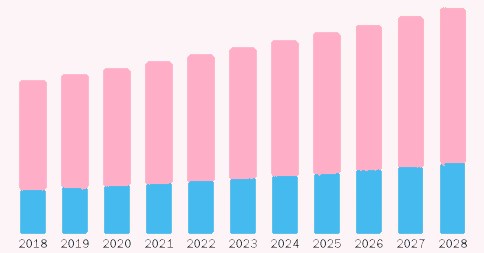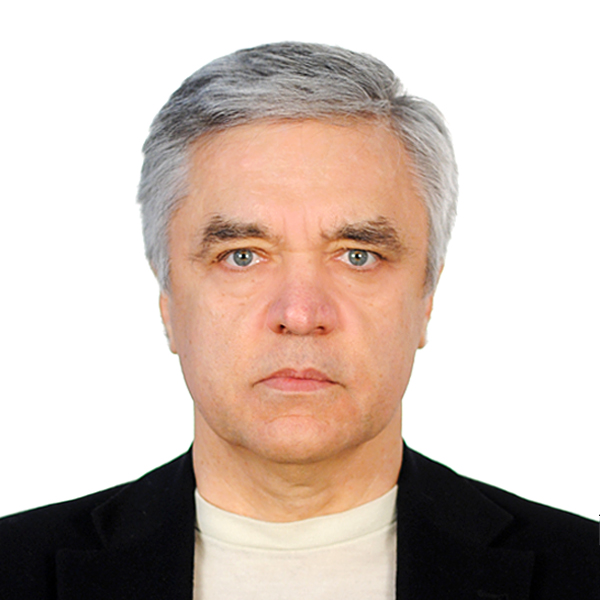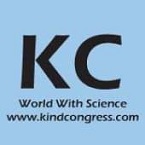Theme: Theme : Complementary challenges and potential outcomes in cardiology
pediatric cardiology 2022
The World Congress on Pediatric Cardiology is going to be held during August 18-19, 2022 as a Webinar. The main theme of the conference was “Complementary challenges and potential outcomes in cardiology.” From interactive, hands-on workshops to plenary sessions covering hot topics in pediatrics, here we extend you a warm welcome on behalf of esteemed organization Conference Series LLC LTD to all Researchers, Doctors, Students, Professors and all the interested people in pediatrics from all over the world for our World Congress on Pediatric Cardiology (Pediatric Cardiology 2022).
Conference Series LLC LTD organizes 300+conferences, 500+ workshops and 200+ symposiums on clinical, medicine, Pharma and science and technology. The enclosure of Pediatric Cardiology will be secured include: Pediatric Congenital heart disease, Pediatric heart murmurs, Pediatric pericarditis, Pediatric cardiac tumors, Cardiology, cardiovascular surgery, and various interventional Cardiology.
Why to attend?
Pediatric Cardiology 2022 is among the world’s driving scientific conference. The two day occasion on pediatric cardiology conference will have 60+ Scientific and specialized sessions and sub-sessions on bleeding edge examination and most recent exploration developments in the field of cardiology and heart surgeries over the globe. It will be a great platform for the young budding researchers and delegates to gain immense knowledge from the Conference, Where there will be Doctors, Researchers, and many more from all over the world with lots of experience in the field of Pediatrics and Cardiology.
Target Audience:
Pediatricians
Directors
Pediatric Cardiologists
Cardiologists
Researchers
Professors
Health care Industries
Scientists
Institutes-Medical Schools
Cardiac surgeons
Manufacturing Medical Device Companies
Students
Scientists
Nurses
Pediatric Care Centers
Track 1: Pediatric Cardiology
Pediatric cardiology is a branch of medicine dealing with various heart related problems in children, infants, new born. The field incorporates therapeutic conclusion and treatment of innate heart diseases; coronary corridor ailment, heart disappointment, valvular coronary illness and electrophysiology in kids and the Physicians who have some expertise in this field of solution are called Pediatric cardiologists.
Track 2: Pediatric Congenital Heart Disease
An inborn issue otherwise known as an innate illness, distortion, birth deformity, or inconsistency, may be a condition existing at or before birth paying very little heed to evoke. Birth surrenders fluctuate typically in cause and aspect effects. Some intrinsic heart diseases in youngsters are easy and needn't hassle with treatment, as an instance, a bit gap between heart chambers that closes on their lonesome.
Track 3: Pediatric Stroke
The two most common types of stroke are ischemic and hemorrhagic stroke: Ischemic strokes happen when the artery that supplies blood to your brain is blocked, for example by a blood clot and hemorrhagic strokes happen when a blood vessel bursts and bleeds into your brain, damaging brain tissue and starving some of your brain cells of blood and oxygen. Without a constant blood supply, your brain cells will be damaged or die, which can affect the way your body and mind work.
Track 4: Fetal Cardiology
In an unborn infant, heart is the primary organ to be created and also a most imperative to his or her lifetime of wellbeing. Fetal Cardiology mainly deals with the detection of the cardiovascular diseases of baby developing in the womb.
Track 5: Pediatric Cardiac Tumors
Cardiac tumors in children are rare, are more commonly benign. Rhabdomyoma, tetratoma, and fibroma are the most common tumors in fetuses and neonates. Sarcomas are the most common primary malignant Cardiac tumors in both children and adults. Patients with cardiac tumors can be asymptomatic or may be present with murmur, arrhythmia, heart failure and sudden death. Echocardiography is the primary modality for evaluation of symptomatic patients.
Track 6: Pediatric Kawasaki Disease
Kawasaki malady is an uncommon youth ailment that influences the blood vessels. The side effects can be extreme for a few days and can look alarming to guardians. In any case, then most youngsters come back to ordinary exercises. Kawasaki illness can hurt the coronary conduits, which convey blood to the heart muscle. Most kids who are dealt with recoup from the sickness without long haul issues.
Track 7: Pediatric Atherosclerosis
Atherosclerosis begins in childhood with the looks of artery fatty streaks. Artery fatty streaks some extents are present in much all people from each human population that has been studied. The typical quantity of artery intimai surface involved fatty streaks doesn't dissent abundant among human populations. While fatty streaking is clinically and doubtless reversible, the progression of fatty streaks to additional advanced lesions may be an essential stage of hardening of the arteries. This conversion takes place at earlier ages in populations with high morbidity and mortality from coronary cardiovascular disease.
Tack 8: Tetralogy Of Fallot in Infants
Tetralogy of Fallot is a birth defect that affects normal blood flow through the heart. It happens when a baby’s heart does not form correctly as the baby grows and develops in the mother’s womb during pregnancy. During pregnancy, there are screening tests (also called prenatal tests) to check for birth defects and other conditions.
Track 9: Pediatric Pericarditis
Pericarditis is an irritation or contamination of the serosa, the slender sac (film) that encompasses the center. There’s a bit live of liquid between the inner and extern layers of the serosa. In youngsters, Pericarditis is well on the way to happen taking once surgery to repair innate (present throughout childbirth) heart surrenders or obtained coronary illness.
Track 10: Pediatric Rheumatic Heart Disease
Pediatric Rheumatic heart disease is damage to one or more heart valves that remains after an episode of acute rheumatic fever is resolved. It is caused by an episode or recurrent episodes of acute rheumatic fever, where the heart has become inflamed. The heart valves can remain stretched and/or scarred, and normal blood flow through damaged valves is interrupted. Blood may flow backward through stretched valves that do not close properly, or may be blocked due to scarred valves not opening properly.
Track 11: Pediatric Pulmonary Atresia
Pulmonary atresia (PA) is a heart defect that occurs due to abnormal development of the fetal heart during the first eight weeks of pregnancy. Pulmonary atresia means that there is an abnormal development of the pulmonary valve. The pulmonary valve is found between the right ventricle and the pulmonary artery, which is the large artery that goes to the lungs. It has three leaflets that function like a one-way door, allowing blood to flow forward into pulmonary artery and to the lungs, but not backward into the right ventricle. With pulmonary atresia, problems with the valve prevent the leaflets from opening; therefore, blood cannot flow forward from the right ventricle to the lungs.
Track 12: Pediatric Heart Murmurs
A heart murmur is essentially an additional sound heard when listening to the heart. The ordinary sounds of heart are made are from the valves closing. If there is turbulence, or unsettling influence, in the stream of blood through the heart or real veins around the heart, a murmur might be listened.
Track 13 : Pediatric Cardiac Arrhythmias
An irregular heartbeat is known as a cardiac arrhythmia (uh-RITH-me-uh). When the electrical signals that coordinate the heart's beats don't work properly, heart rhythm abnormalities (heart arrhythmias) arise. The heart beats too rapidly (tachycardia), too slowly (bradycardia), or irregularly due to improper signalling.
Track 14 : Heart Valve Diseases
One or more of your heart's valves fails to function properly in heart valve disease. Four valves in your heart keep blood flowing in the right way. One or more of the valves may not open or close properly in some situations. Blood flow from your heart to your body may be disturbed as a result of this.
Track 15 : Pediatric Cardiac Surgery
The following conditions are commonly treated by paediatric cardiac surgeons. Valve issues, irregular blood arteries, and holes in the heart chambers are all treated. repairing any cardiac damage Heart defects, both congenital and acquired. Transplanting the heart and lungs.
Market Overview
Due to increased rates of juvenile cardiac disease and technical improvements in the industry, the market for paediatric interventional cardiology is expanding at a rapid rate. Other factors influencing the market for paediatric interventional cardiology include expanding public awareness, a preference for minimally invasive treatments over traditional operations, and a rise in congenital diseases. However, the market for paediatric interventional cardiology is projected to have growing challenges due to strict regulatory guidelines and pricey therapies. The subspecialty of cardiology known as interventional cardiology treats coronary artery, valvular, and congenital heart disorders using intravascular catheter-based procedures and fluoroscopy. Infants, kids, and teenagers up to the age of 18 can undergo interventional cardiology procedures under the heading of paediatric interventional cardiology. Angioplasty, valvuloplasty, congenital heart defect treatment, and coronary thrombectomy are a few of the several operations that may be carried out under interventional cardiology.
Key Market Drifts
For paediatric interventional cardiology operations, there are many kinds of stents on the market. A few of them are bare stents, drug-eluting stents, and bio-absorbable stents. According to a recent study by Rady Children's researchers, coronary stent implantation is a viable and secure palliative option for children fifteen months and younger. The study was published in Catheterization and Cardiovascular Interventions, the official journal of The Society for Cardiovascular Angiography and Interventions (SCAI). During angioplasty, any constricted coronary artery is widened using a bare stent. If the obstructed channel is big and the obstructions are modest, a bare stent is suggested. A bare-metal stent is fairly affordable, aids in quick vascular repair, and has no thrombosis risk. For stenotic arteries, drug-eluting stents are utilised to delay fibrosis by discharging medicines. These, as opposed to bare stents, assist in preventing restenosis or relocking of the artery following angioplasty and lessen the necessity of repeating the procedure. A metal or polymer that is dissolved or absorbed by the body makes up a bio-absorbable stent. In comparison to both bare stents and drug-eluting stents, it is quite advanced. Permanent metal prostheses are not brought on by biodegradable stents. The stent disintegrates, preventing thrombosis and restenosis.The highest market share for paediatric interventional cardiology is held by the North American area. This is explained by the countrywide increase in CHD cases. According to the Centre for Disease Control (CDC), congenital heart disease (CHD) is the most prevalent kind of birth defect, affecting roughly 40,000 births annually or about 1 percent of all births. While the prevalence of other forms of mild CHDs has remained steady, the prevalence of other mild CHDs is rising. A hereditary issue is linked to at least 15% of all CHDs. Other major factors that are expected to contribute to the growth of the paediatric interventional cardiology market in North America include the increasing demand for less invasive procedures for high-risk patients, the prevalence of mitral regurgitation, severe aortic stenosis disorder, and factors such as quicker recovery times, shorter hospital stays, positive outcomes with transcatheter prosthetic valve implantation, and other technological advancements.
Competitive Landscape
By utilising inorganic development tactics like collaborations, mergers, and acquisitions, market participants in the global paediatric interventional cardiology market are concentrating on the expansion of their product portfolios. Abbott, Boston Scientific Corporation, Cardinal Health, Edwards Lifesciences Corporation, GE Healthcare, W. L. Gore & Associates, Medtronic, NuMED Inc., Siemens AG, and others are significant market participants in the global paediatric interventional cardiology market.

Conference Highlights
- Pediatric Cardiology
- Pediatric Congenital Heart Disease
- Pediatric Stroke
- Fetal Cardiology
- Pediatric Cardiac Tumors
- Pediatric Kawasaki Disease
- Pediatric Atherosclerosis
- Tetralogy Of Fallot in Infants
- Pediatric Pericarditis
- Pediatric Rheumatic Heart Disease
- Pediatric Pulmonary Atresia
- Pediatric Heart Murmurs
- Pediatric cardiac arrhythmias
- Heart Valve Disease
- Pediatric Cardiac Surgery
To share your views and research, please click here to register for the Conference.
To Collaborate Scientific Professionals around the World
| Conference Date | August 18-19, 2022 | ||
| Sponsors & Exhibitors |
|
||
| Speaker Opportunity Closed | |||
| Poster Opportunity Closed | Click Here to View | ||
Useful Links
Special Issues
All accepted abstracts will be published in respective Our International Journals.
- International Journal of Cardiovascular Research
- Interventional Cardiology Journal
- Cardiovascular Investigations: Open Access
Abstracts will be provided with Digital Object Identifier by

















